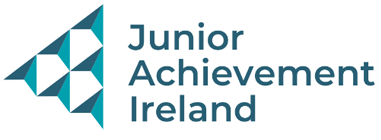Junior Achievement Ireland (JAI) recruits, vets, trains, equips and manages business volunteers from our supporting organisations to facilitate structured educational activities for primary & second level students to inspire and motivate young people to realise their potential, to learn more about how to succeed in the world of work and to fully understand the important role that education will play in shaping their futures.
JAI is committed to safeguarding children. By working under the guidance of our safeguarding policies our volunteers and staff maintain a safe environment for young people to grow and develop.
JAI’s risk assessment framework identifies the areas of potential risk, the likelihood of the risk occurring, and details the relevant policy or protocols designed to mitigate these risks. In the context of child safeguarding the risk areas are grouped under the following categories: Complaints & Discipline (internal); Complaints & Discipline (external); Volunteer recruitment training management; Staff recruitment; Staff induction training and ongoing training for staff; Reporting Procedures (grounds for concern – Tusla); Communications (Internal and external); Use of facilities; General Risk of Harm and Vetting, including liaising with the National Vetting Bureau.
The risk assessment was undertaken on March 26th, 2018.
Our Safeguarding Statement has been developed in line with the following: Children First: National Guidance for the Protection and Welfare of Children; Tusla’s Child Safeguarding Guide for Policy, Procedure and Practice; and current legislation such as: Children First Act 2015, Child Care Act 1991, Protections for Persons Reporting Child Abuse Act 1998, and the National Vetting Bureau Act 2012.
We recognise that implementation is an ongoing process. JAI is committed to adhering to the values espoused in this Child Safeguarding Statement, and operationalising our commitment to keeping children safe from harm while involved in our activities. We will review our guiding principles and child safeguarding procedures every two years or sooner if necessary due to service issues or changes in legislation or national policy.
This Child Safeguarding Statement will be reviewed again in March, 2020.
Contact details for the DLP and Deputy DLP are as follows:
Designated Liaison Person
Helen Raftery, Chief Executive
Email: [email protected] Telephone: 01 2930210 Mobile: 087 2223818
Deputy Designated Liaison Person:
Michael Scanlon
Email: [email protected] Telephone: 01 2930210 Mobile: 087 2020281
In operationalising our Risk Assessment Framework, the following procedures form the core of the implementation of our safeguarding policies:
|
Complaints & Discipline (internal) |
Procedures for the management of allegations of misconduct by staff against a child participating in our activities |
|
Complaints & Discipline (external) |
Procedures for the management of allegations of misconduct by volunteers participating in our activities |
|
Volunteer recruitment training management |
Procedures and practices for the safe recruitment of volunteers to work with children in our activities |
|
Staff recruitment |
Procedures and practices for the safe recruitment of staff to work with children in our activities |
|
Staff induction training and ongoing training for staff |
Procedures for access to child safeguarding training and information, including the identification of the occurrence of harm |
|
Reporting Procedures (grounds for concern – Tusla) |
Procedure for reporting of child protection or welfare concerns to statutory authorities |
|
Communications |
Externally-facing content subject to maker-checker |
|
Use of facilities |
Audit as per event template to be completed and signed in advance of the event |
|
General Risk of Harm e.g. equipment in kits or hire of buses |
Completing event planning templates and implementing best practice guidelines |
|
Vetting |
Compliance checks integrated in CRM |
